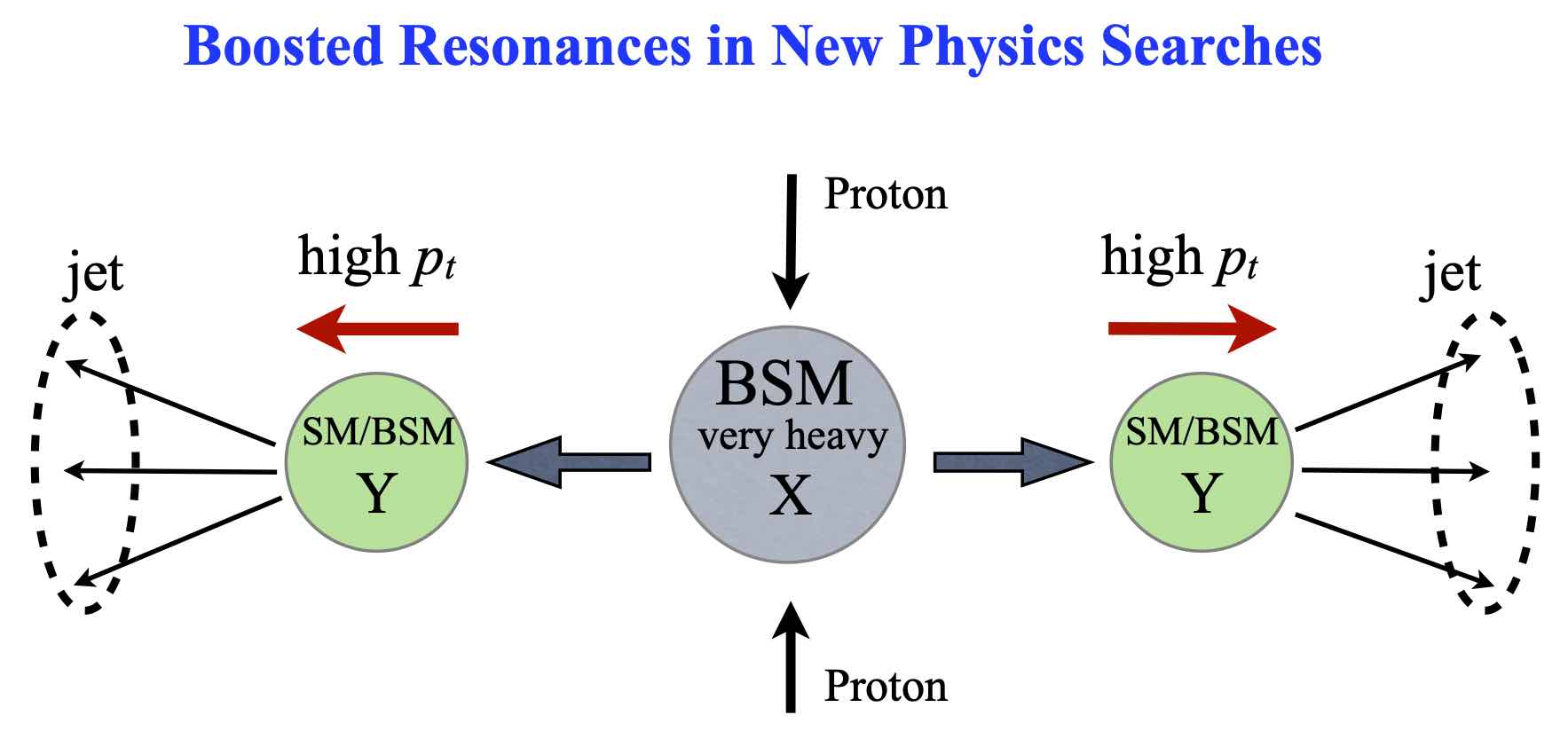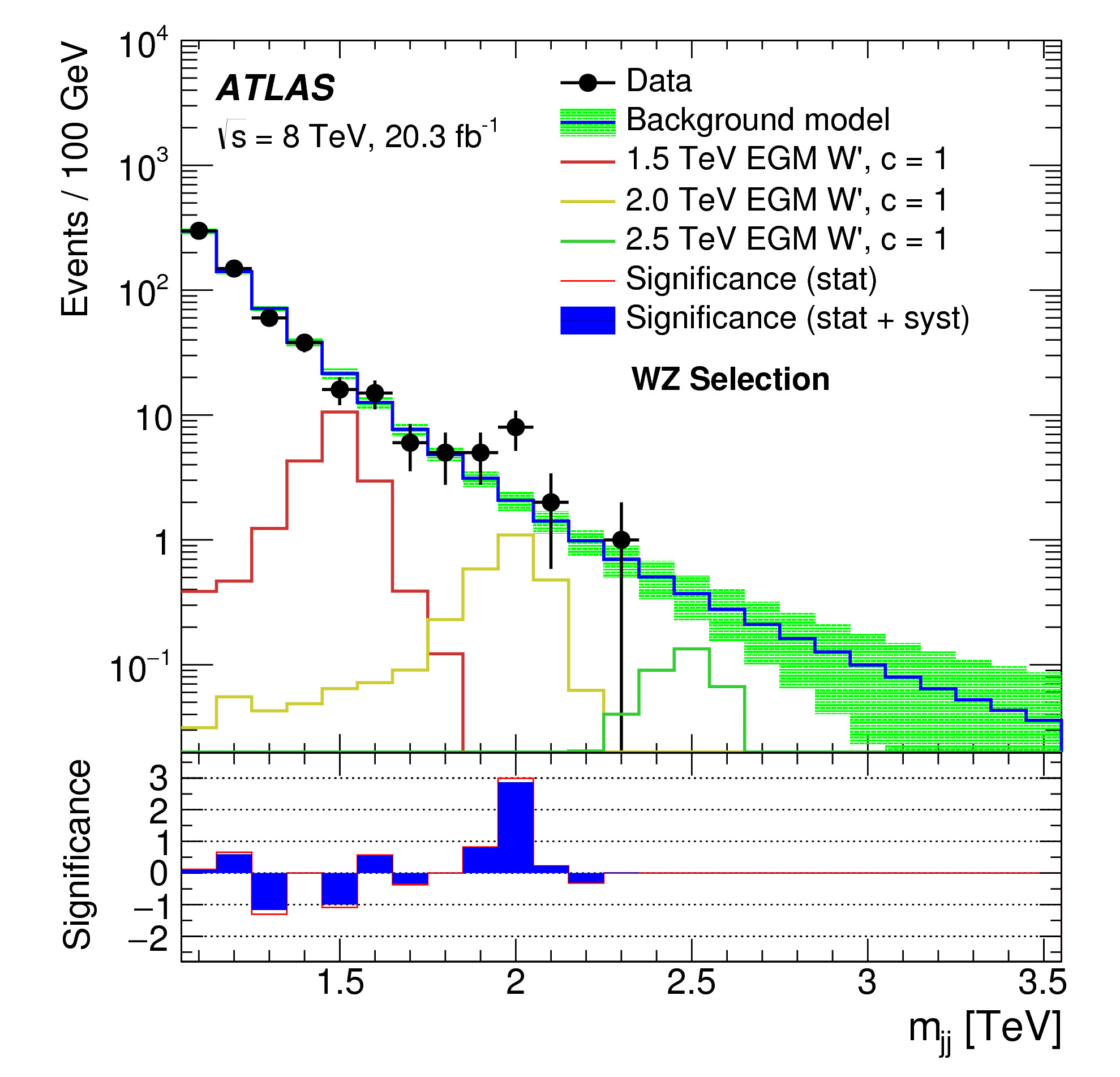Motivation for high-pT tagging
Searching for heavy resonances is one of the major tasks of the multi-purpose experiments (ATLAS and CMS) at the LHC. If heavy TeV-scale resonances decay into electroweak-scale particles which in turn have large branching ratios into quarks, i.e. XTeV → YEW → jets, these quarks are likely to be collimated in the lab frame. More precisely, the extent to which the decay products of the electroweak-scale resonances are collimated depends on the ratio between the mass of the heavy new-physics resonance and the electroweak scale. For central production one finds p⊥,Y ∼ mX/2. As a result, for the decay products of Y their angular separation scales like ∆Rjets ∼ 4mY /mX .

In an experiment jets are reconstructed using infrared-safe jet algorithms. Input to jet algorithms are so-called topo-clusters, objects constructed from long-lived particles’ energy deposits in the electromagnetic (e-cal) and hadronic (h-cal) calorimeter.
When scales are vastly separated and either 4mY/mX ≪ 0.2 or in general p⊥,X ≫ mX the angular separation of the decay products can be too small to resolve them individually. While the overall energy deposit of highly boosted resonances can still be measured, the substructure, i.e. the energy sharing between the decay products, becomes oblivious and the ability to discriminate between a decaying resonance and QCD jets using jet substructure observables quickly deteriorates.
Already at 8 TeV center-of-mass energy ATLAS and CMS have pushed into phase-space regions where the granularity of the detector can become a limiting factor for their searches:

We have designed dedicated reconstruction techniques for top quarks and electroweak gauge bosons that aim to overcome existing experimental limitations by combine the good energy resolution of the calorimeter with the very fine spatial resolution of the tracker.